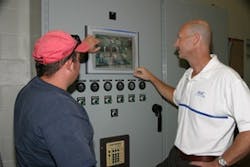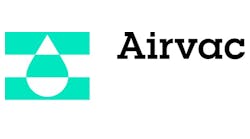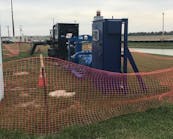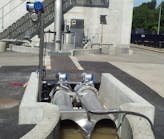Public works veteran learns to embrace vacuum sewer systems
You could forgive Robert Holland for being skeptical about vacuum sewer technology in 2007. A veteran with 34 years in the utilities business, he had no experience with them. Like many utilities directors, he had spent his career working on gravity systems. To him, gravity was easy to understand; vacuum technology seemed complicated.
Holland first had the opportunity to learn about vacuum sewers in 2007, when the city of Groveland, Fla., took over the sewer operations of a new subdivision called Waterside Pointe. The subdivision developers had chosen AIRVAC vacuum technology over gravity sewers because of the area’s flat topography and high groundwater table, factors that made vacuum sewer installation a more cost-effective option.
Holland and his staff were understandably skeptical. Holland was concerned that the system would be finicky, complicated and a long-term maintenance nightmare.
Now, after three years of managing the vacuum system, Holland has a new outlook on vacuum technology.
“I have been very pleased. I wish I had known about vacuum sewers sooner,” Holland said.
According to Holland, it took only a few weeks to learn the benefits of vacuum sewer technology. Most of his assumptions about vacuum sewer maintenance and repairs turned out to be untrue: he found that vacuum systems are relatively simple in design and they are easy to maintain. In fact, Holland is now a proponent of vacuum sewers and says that they are superior to gravity sewers in three key areas: safety, maintenance and environmental friendliness.
Safety
“The thing I noticed almost immediately about the vacuum system was the significant safety benefits,” Holland said. “As a manager, I want to make sure our staff stays safe, that no one gets hurt. There are a lot of design features about vacuum sewers that make them safer.”
With a vacuum system, workmen are rarely in confined spaces. Nearly all maintenance work is done in the spacious vacuum stations or outdoors. Utility workers do not have to climb ladders or work in unhealthy, confined areas. Each of the homes and businesses on the Groveland vacuum system is connected to a valve pit, which is typically located on its property near the street, so workmen never have to descend into manholes located in the middle of busy roads.
Vacuum sewers are closed systems, so utility workers are seldom exposed to raw sewage. Because they are usually working in a dry environment, there is less danger of electric shock.
Easy Maintenance
In addition to easy access to equipment in clean, dry vacuum stations and the easily accessible vacuum pits, workmen also appreciate the fact that vacuum pumps and sewage pumps require little daily maintenance.
“Each day I spend about 15 minutes in the vacuum station checking the gauges and monitors. There are one or two small things we take care of. The whole process is really simple,” said Tony Trevino, the supervisor of water and sewers for Groveland. Trevino is responsible for the day-to-day operation of the system, which has a single vacuum station for 600 homes.
Aside from visiting the vacuum station each day, Trevino said he has to add grease to the sewage pumps once a month and occasionally has to attend to a vacuum valve that has become stuck in the open position, a problem that can be fixed in less than five minutes. He noted that the vacuum valve pits, which operate pneumatically and require no electricity, are easily accessible and simple to understand.
If a vacuum line is damaged, Trevino and his team know about it right away by reading the monitors and gauges in the vacuum station. The damaged pipe is usually found within minutes and a fast repair can be made. This helps alleviate customer complaints about service interruption and reduces the amount of groundwater that can infiltrate the system, keeping treatment costs low.
“The vacuum lines are buried pretty shallow, usually about 3 to 4 ft, so we can dig them up fast and make the repair,” Trevino said. “Compare that with a gravity line that is 8 to 10 ft deep. Repairing gravity sewers takes a lot of time and effort.”
“One thing that struck me from the beginning was the simplicity of the AIRVAC system,” Holland said. “I expected a lot of technical issues, but we were trained on the system in a matter of a few days. It is really a very simple system, which was a pleasant surprise.”
Environmental Benefits
Holland noted that the Groveland vacuum sewer system is located in a Green Swamp Area as designated by the state of Florida. Because of its location, there are important environmental concerns should a sewer leak develop. However, because of vacuum pressure within the line, vacuum sewers do not leak, so there is no danger of pollution from the line entering the environment.
“The technology is perfect for our location,” Holland said. “Even brand new gravity systems can develop leaky pipes because of ground settling, but the vacuum sewer lines can’t leak due to the vacuum pressure within the line.”
The fact that vacuum sewers do not leak provides another important benefit–no soil erosion. Leaky underground pipes often create soil voids that lead to cave-ins and street collapses. Expensive repairs must be made, traffic and sewer service must be rerouted and workmen can be put at risk. These problems are mostly eliminated with vacuum sewers.
Holland also pointed out that because vacuum sewers are a closed system, there is no odor at the valve pit, from the lines or even at the vacuum station, which is located near a residential neighborhood. Most vacuum stations are designed to look similar to surrounding buildings so that they are unobtrusive.
When the weather becomes violent and electrical power is lost, as often happens with hurricanes and thunderstorms, Groveland’s vacuum sewer system poses no problem. The site is equipped with a backup generator that will keep the system operational.
“Some subdivisions have three or four lift stations for their gravity system,” Holland said. “We have 39 lift stations and two generators for our gravity sewer system. When there is a power outage, keeping them running is tiring and stressful for the entire staff. With the vacuum station, we have nothing to worry about.”
The Best Way to Go
With more than three decades of sewer construction and maintenance experience, Holland knows a good idea when he sees it. Waterside Pointe’s vacuum sewer system is easy and cost-effective to maintain, is environmentally sound and can function normally even when electrical power is lost. He now hopes that every new subdivision comes with a modern AIRVAC sewer system.
“There are a lot of nightmares associated with gravity sewer systems, but I thought that was just the way it was and it would never be any different,” Holland said. “Now that I have worked with vacuum sewers, it’s like, ‘what was I thinking before?’ Vacuum systems work so well; they almost never leak and the maintenance routine is very easy. The future will show that vacuum sewers are the best way to go.”



